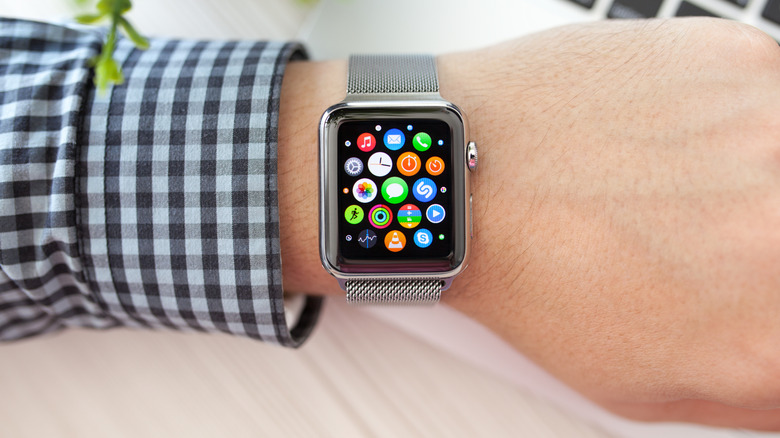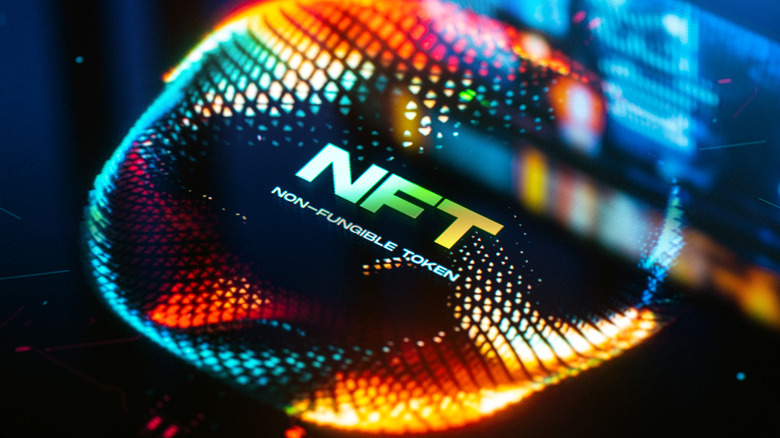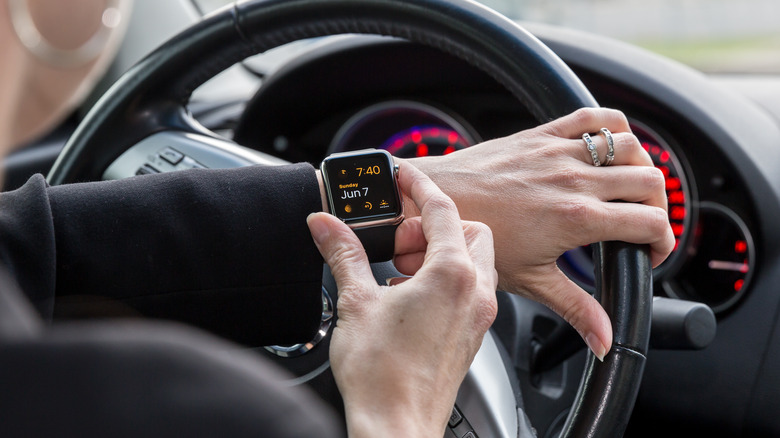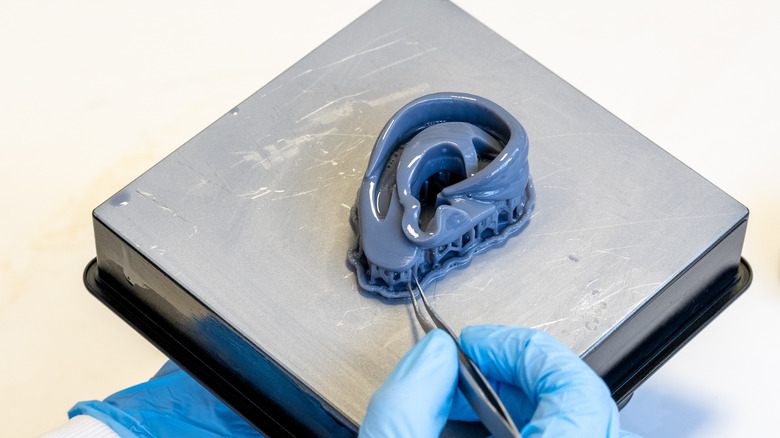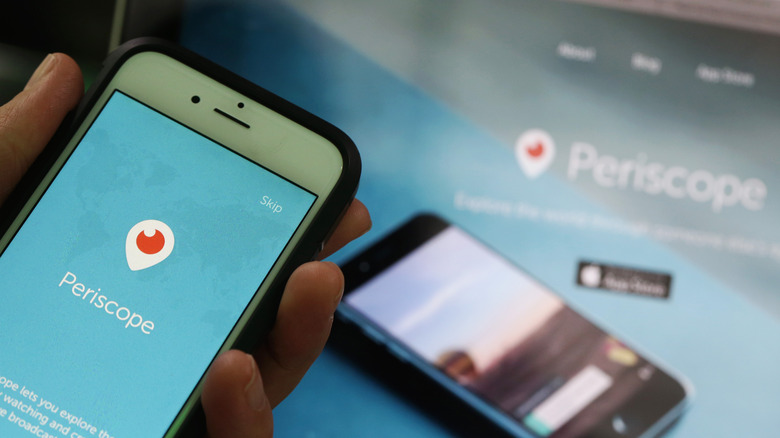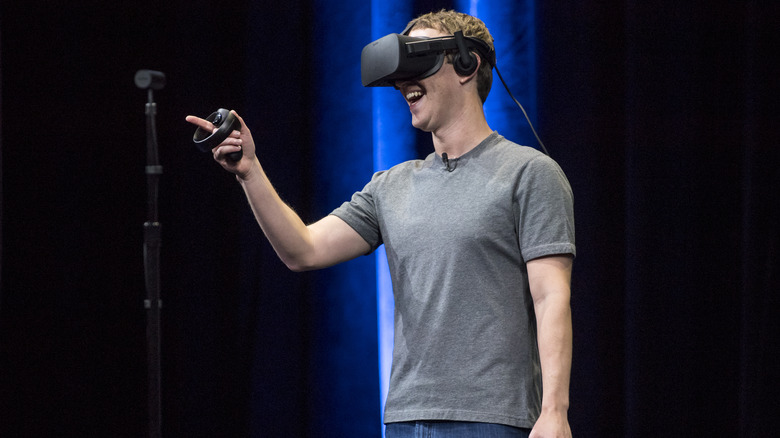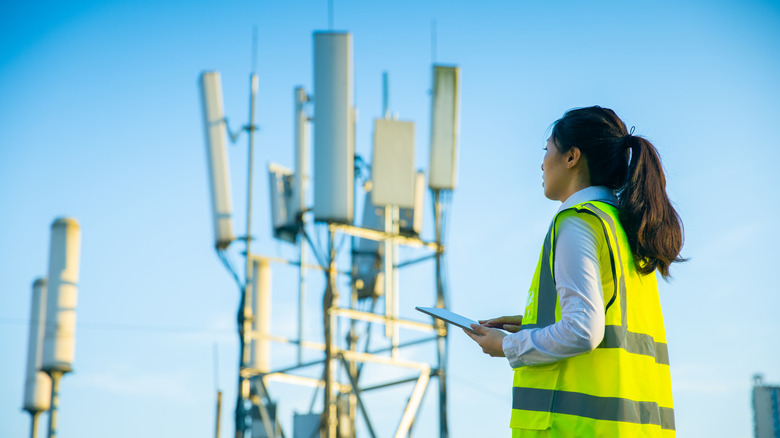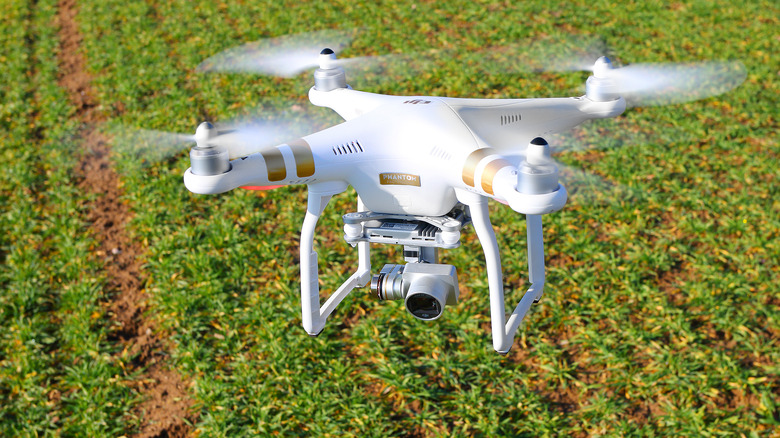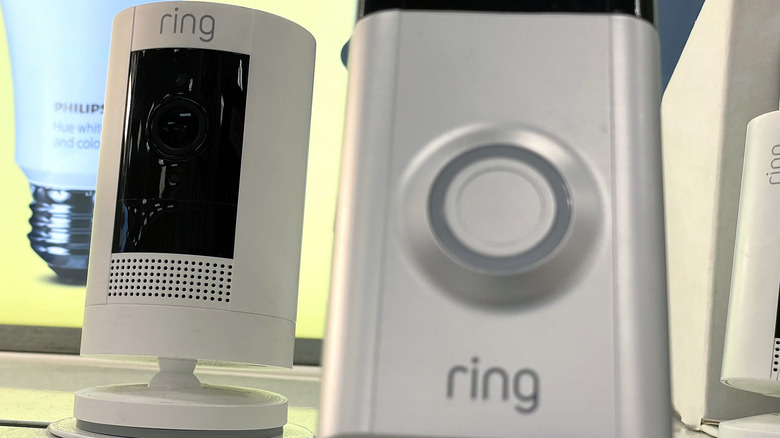14 Game-Changing Inventions From The Past Decade
Highly advanced technology is such a deeply integrated part of modern life for most people that it can all start to seem a little commonplace, and even advancements that really push humanity forward can feel iterative instead of revolutionary. New smartphones arrive every year like clockwork, image quality on TVs gets marginally more high-definition, and we all just float on as if any of this stuff wouldn't have absolutely blown minds in the late 20th Century.
The truth, however, is that innovators worldwide have been making some pretty huge leaps in the past ten years. The worlds of commerce, medicine, and exploratory science have seen dramatic changes that have a game-changing impact on our lives. Mankind's understanding of everything from the goings-on in the deepest cosmos to the workings of the smallest microorganisms has improved by leaps and bounds, and the way in which we interact with and relate to the world — both technological and organic — has been disrupted, made over, and disrupted again.
Here are 14 inventions, innovations, and engineering marvels that have changed the game in the past decade.
NFTs
As anyone paying $9.99 per month for access to just about every song ever recorded can tell you, the digital revolution has had a profound effect on the perception of ownership compared to access when it comes to media. In 2014, however, NFTs emerged as a new means of creating exclusivity online. A non-fungible token is a unique and non-replicable identifier that can be recorded on a blockchain, thereby establishing its holder as the sole owner of whatever it's linked to — in most cases, a piece of media like an image, an audio file, or a video clip.
If it sounds a little fuzzy around the edges in terms of how it all works and how exclusive something like a digital image can actually be, well, you're not alone in that assessment. However, that hasn't stopped prospectors and investors from leaning into the technology, sometimes to the tune of tens of millions of dollars. The commercial world is still only scratching the surface of what NFTs can do and how they can be utilized, but there's no doubt that their arrival has upheaved the online economy and changed how we look at what media is worth.
The smartwatch
The idea of a watch that's more than a watch has had a place in the public imagination ever since "Dick Tracy" hit the newspaper comic strip page in 1931, and various companies have taken stabs at wrist-borne tech in the past century. When Apple CEO Tim Cook announced the Apple Watch in 2014, however, it felt like the concept had finally reached its peak form.
The interface felt like an extension of the mobile devices on which consumers had already been trained since the arrival of the iPhone, and Apple's focus on design and aesthetics made previous high-tech watches seem clunky by comparison. What's more, it incorporated and advanced the kind of biometric monitoring technology previously seen in products like Fitbit, allowing users to comprehensively track aspects of their health and physical wellness in ways that can dramatically impact disease prevention and detection.
How far that can go and what it might mean for medicine is still being explored, but the smartwatch has arrived, and wearable tech is finally having its moment.
Viable mRNA vaccines
While there's a lot of impressive, and even occasionally revolutionary, tech out there, it's not often that you can cite an invention that wholly and singularly alters the course of world events. Anyone who's been alive and aware since 2020, however, knows that the mRNA vaccine platform played a key part in turning the tide of the global COVID-19 pandemic, saving countless lives and shifting the narrative on one of the 20th century's most significant and widespread calamities.
Messenger RNA-based vaccine technology has been in development since the late 1980s, but it wasn't until 2020 that it stepped fully into the spotlight. Pharmaceutical companies Moderna and Pfizer were able to make use of mRNA to develop shots to ward against the worst effects of the emergent virus that had killed millions, disabled many more, and absolutely upheaved the world economy in what was record time by even the most modern medical standards. What's more, the nature of the platform made manufacture, rollout, and iteration more efficient than it had ever been.
While the COVID-19 vaccines are the most high-profile mRNA treatments to emerge so far, the technology is also showing promise in the treatment of certain cancers and viruses like Zika, HIV, RSV, and influenza. There's still plenty of research to be done, but the effectiveness of mRNA as a vaccine platform has been proven under some of the toughest of circumstances, and its future looks bright.
Large language models
Hey, have you heard that AI is taking over the world? If you've followed the news for the past six months to a year, you've no doubt been inundated with stories about the ways in which artificial intelligence is set to disrupt everything from art to computer science to the way we search and interact with the Internet. What do the tools making the headlines have in common? They're built on the concept of large language models, neural network algorithms with ungodly numbers of parameters and trained on epic amounts of data to perform a wide variety of tasks.
That image of the Pope wearing a stylish jacket created in Midjourney was made possible because the LLM backing up the application was able to source a vast trove of existing art to inform the final image it produced. That collaboration between Drake and the Weeknd that blew up on TikTok before being outed as an AI-generated fake was made possible by a LLM's study of the two artists' voices and existing music.
Right now, a lot of these applications are being treated as curiosities or viral fodder, but we've only just begun to scratch the surface of LLMs' capabilities, and the potential for revolutionary change they bring is something with which humanity is going to be reckoning well into the future.
Reusable rockets
No matter how you slice it, moving people and material into Earth's orbit is an expensive proposition. One aspect of the enterprise that's particularly costly, however, is the fact that most of the hardware is single-use, either destroyed or lost after take-off. That's changed in the past decade as private enterprise has pushed the boundaries of what modern rocketry can do, and it stands to revolutionize travel from Earth's surface to infinity and beyond.
New Shepard, the rocket developed by Jeff Bezos-backed Blue Origin, made a return from the edge of space in November of 2015, but the real giant leap happened one month later when Elon Musk's SpaceX was able to land the first stage of its Falcon 9 rocket upright on solid ground at Cape Canaveral, Florida after it had been to space.
These dual events kicked off a worldwide race to perfect the deployment of reusable space hardware, and it's a quest that could reduce the cost of space travel by literally tens of millions of dollars.
Bioprinted organs
The idea of artificially creating implantable organs has been something of a holy grail in transplant medicine for some time since it could address issues in the field such as host rejection of donated organs or long wait times for donor availability. Things took a step forward in 1988 with the invention of 3D bioprinting, which allowed the creation of biological material using 3D printing technology.
While the ensuing years saw various advancements as scientists probed the boundaries of the technology, it wasn't until 2019 that researchers in Israel were able to 3D print the first fully functional human organ: A heart with blood vessels capable of natural contraction. Polish scientists soon followed with a prototype of a human pancreas, and the idea that we could soon see the first implantable printed organ has been inching tantalizingly closer to reality ever since.
The use of bioprinted material in practical medicine may still be years away, but these advancements have the finish line more in sight than it's ever been, and the applications for treatments being considered across the spectrum of conditions and injuries are positively revolutionary.
Periscope
It may be hard to believe this given we live in an era when everybody is broadcasting every part of their life all the time, but there was a time when live-streaming video, expensive and technically challenging, was beyond the grasp of the average human. Then, along came Periscope in 2015, and suddenly all you needed to stream video to a mass audience was a smartphone and a dream. The service was incredibly popular, clocking 10 million users a mere four months after its release, with everyone from sitting government officials to "Game of Thrones" fans getting in on the action.
Now, there are entire careers built by folks streaming themselves taking part in activities from gaming to watching sports to just hanging out. The technology was particularly put to use during the early days of the COVID-19 pandemic when we were all mandated to hang out at home and do a whole lot of nothing. Periscope was surpassed by names like Facebook Live, Instagram Live, and Twitch until being finally discontinued in 2021, but it was the first to center smartphones as a platform for today's stream-inundated social technology landscape.
TikTok
By the time the video-based social media app TikTok debuted in 2017, the social media conversation had gotten fairly dystopian. Many users of networks like Facebook and Twitter felt as if their feeds had been taken over by advertisers and misinformation. Offering an alternative built on a unique feature set and a highly-praised recommendation algorithm that feeds users information based on their direct interaction with content, TikTok burst onto the scene and rose to become a dominant pop culture force. As of this writing, it has been downloaded over 3.5 billion times worldwide – a number equal to almost half the actual global population.
TikTok's popularity, particularly with Gen Z, has upheaved entire industries. For example, a feature allowing users to add music to their video uploads has turned the platform into one of the key discovery engines for artists hoping to break big, and the effect has bounced back as artists and labels have started releasing music crafted specifically to fit TikTok's 60-second time limit.
However, the network has also become the center of a pointed conversation around national security and whether the data it's gathering on its users is being ethically utilized. It's a testament to the app's penetration, however, that government discussion of whether to ban it or not has, so far, primarily passed with not much more than a whimper, while TikTok has continued to gather clout as the platform of note for those born after the turn of the millennium.
VR headsets
The concept of virtual reality has piqued technologists' and sci-fi visionaries' imaginations for decades, but the technology's complexity and expense long put any real application of it out of reach of the common person. That all changed when Palmer Luckey brought the Oculus Rift headset to software developers in 2013. Luckey's design delivered a high-quality VR experience at a significantly cheaper production cost than any of its competitors. With an endorsement from id Software's John Carmack, the Oculus Rift went big-time, hitting the consumer market in 2015 and setting off an arms race that has been joined by heavy hitters like Sony, HTC, and Meta.
Given Luckey's initial focus on gaming, it should come as no surprise that one of the most popular applications for today's VR headsets is in that space. The wider uses of VR interfaces are still being explored, with everything from education to fitness to live performance viewership angling for the headset-owning audience. Apple's 2023 announcement of its Vision Pro as a passive entertainment and productivity device rather than a gaming platform indicates that those exploring this technology are taking great strides to broaden its appeal. The Cupertino giant rarely puts its clout behind a bum technology bet, so it's safe to assume we'll be hearing a lot more about VR in the next decade.
5G
As a smartphone user, it's easy to numb to the announcement of new generations of mobile networks. The number at the top of your display changes, your photos upload faster, and you go about your day. There's a reason, however, that carriers and tech companies have cranked up the ballyhoo on the jump from 4G to 5G. The theoretical speed difference is significant, with 5G capable of delivering peak data rates of up to 20 Gbps. In addition, it's designed to provide much more network capacity by expanding into new, higher frequency ranges inaccessible to older-generation technology. This all means much faster data transmission to a larger number of devices.
So, cool, your stream of the latest episode of "The Bear" will be less likely to be interrupted even while you're in the massive crowd at the Taylor Swift show. However, technologists are dreaming up ways to make use of 5G's scope other than making smartphone users' lives easier. Autonomous vehicle engineers envision achieving near-real-time data transmission between hundreds of nodes housed in cars, street-installed sensors, and networked central resources. The medical field is exploring remote treatment options enabled by doctors manipulating 5G-enabled equipment.
Beyond that, the Internet of Things we've all heard about, in which every device, appliance, piece of furniture, window pane, and fixture in the home is connected, becomes all the more possible thanks to 5G's capabilities. As iterative improvements go, it's one of the biggest steps forward wireless data transmission has seen to date.
CRISPR gene editing
There are few topics as hot-button in biomedical science as the editing of the human genome, both because of its staggering potential for endeavors like treating disease and thanks to a number of thorny philosophical questions it begs.
CRISPR gene editing is a relatively straightforward method of cutting out a piece of DNA and replacing it with something new that has moved that conversation ahead by leaps and bounds ever since it was first used to successfully alter genes in eukaryotic cells in 2013. An even more impactful frontier was seemingly crossed in 2018 when a Chinese scientist named He Jiankui shocked the world by claiming he'd used CRISPR to alter twin human embryos to make them more resistant to infection by HIV, setting off a firestorm of criticism, scrutiny, and claims of fraud that lead to his imprisonment by the Chinese government.
He Jiankui's first steps toward genetically altering actual humans may have been clumsy and unethical, but they certainly won't be the last the scientific community takes along the road toward the ability to alter the human genome. Given the genetic roots of diseases and conditions from cancer to blindness and beyond, the rewards for the medical community are too great to set aside, and CRISPR technology makes exploring them easier than it's ever been. Whether that exploration can and will be done responsibly will be a debate that consumes the genetic research community for decades to come.
Deepfake face swaps
Sometimes an invention changes the game for the better, and sometimes not so much. The jury's still out on the practice of video deepfaking. Loosely defined as the use of AI-powered tools to swap or alter the faces of people appearing in video footage in a realistic or convincing way, deepfaking was first used for unsavory shenanigans in the darker corners of the web, but as the technology has proliferated and become more accessible, it's begun to be considered for professional and academic applications, and raised incredibly thorny questions about media literacy and the role it could play in the spread of misinformation.
One of the key side effects of the smartphone era has been the rise of video as one of the last vestiges of truth in media. Images can be tweaked with Photoshop and words can be spun in any direction, but getting something on video has typically been seen as proof that it happened given the general expense of altering it convincingly. If those barriers come down and it becomes easy to make it seem as if anyone is doing anything on camera, the concept of a shared reality — not to mention the common ability to discern truth from fakery — could be seriously endangered.
How governments, media organizations, and the average consumer will navigate those rocky waters remains to be seen, but deepfakes will likely have a far-reaching impact on the course of human events in the years ahead.
DJI Phantom drone
The iPhone wasn't the first cell phone or even the first smartphone, but its sleek design and emphasis on user-friendliness rocketed it to the forefront of the zeitgeist when it was first released. As the iPhone was to the smartphone market, so was the DJI Phantom to the Unmanned Aerial Vehicle landscape.
First made available in 2013, the Phantom quadcopter was bare-bones by modern standards, lacking even an onboard camera and instead relying on the attachment of a GoPro. It was hugely popular at launch, however, thanks to how easy it was to pilot and a consumer-friendly appearance that has become the de facto silhouette when most people think of this kind of drone.
DJI iterated quickly and competently, adding improved features with each new release of the Phantom. The product and its many imitators are now utilized for everything from amateur photography to professional journalism and filmmaking, landscape mapping, search and rescue, farming, and even as an environmentally friendlier replacement for fireworks displays. New applications for drones are being explored all the time, and wherever that road of innovation goes from here, it was the Phantom that paved the way.
Ring doorbell camera
When Jamie Siminoff pitched his smart doorbell concept on "Shark Tank" in 2013, the show's judges turned him down. Fast-forward to 2018, and Amazon is purchasing the company, renamed from DoorBot to Ring, to the tune of $1 billion — not bad for an idea that got roundly dissed on network television.
It's not as if video-based home security systems didn't exist before Siminoff walked on the "Shark Tank" stage. What Ring brought to the table were features built for the smartphone era, like the ability to monitor its footage from a handheld device and engage in two-way communication with visitors. The timing wasn't bad, either, as the rampant rise in e-commerce and consumers receiving products by delivery coincided with a big jump in porch piracy.
There have been side effects to the proliferation of Ring and Ring-like products, as well. On the plus side, we've seen the rise of a whole new genre of viral video comedy featuring unsuspecting –- and often clumsy –- delivery people or animals wild and domestic. However, privacy advocates have warned that it's not all fun and games, citing the device's potential enablement of a surveillance state, which, if you'll pardon the pun, rings all the truer given the revelation in 2022 that Amazon occasionally offers law enforcement warrantless access to Ring footage without user consent.
